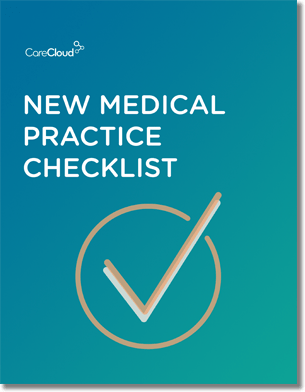Although purchasing a client-server based EHR seems like it would be a one-time lump sum commitment, this simply isn’t the case. There are many costs client-server vendors fail to mention when marketing their software offerings.
The truth is, client-server EHRs are difficult to maintain. Yet, some single-location practices opt for client-server EHRs because of the illusion of cheaper long-term costs and enhanced security.
But the illusion isn’t reality. Below, we identify some of the financial issues that arise when adopting a client-server EHR.
Operating Costs
Yes, installing a client-server EHR requires a one-time lump sum, but there are still many other costs to account for afterward. As revealed by client-server EHR audits from the Maryland Department of Health and Mental Hygiene and the Texas Medical Center, post-purchase costs can run into the tens of thousands of dollars rather quickly.
Take licensing subscriptions for example. A licensing subscription is typically $6,500 for the first physician and $5,000 for each additional doctor. Mid- and lower-level staff members usually require another $5,000 initial licensing fee each.
Then, there are interface costs to take into consideration. Health Information Exchange (HIE) setup fees can run as high as $750, not including the ongoing connectivity fee of $75.
Unfortunately, the expenses don’t stop there. Count on an extra $500 in setup fees for patient portal adoption. And since client-server EHRs don’t update automatically like their cloud-based counterparts, add another $20 monthly for patient updates. Now, tack on another $100 per provider for administrative expenses.
Finally, there are training costs, which can be $1,000 per day for onsite support, with web and phone support ranging between $200 and $500 a piece.
Identifying Issues
In addition to monetary expenditures, client-server EHRs also require a significant investment of time and energy.
As we mentioned before, client-server software doesn’t update automatically, so physicians have to decide for themselves when to do so. Also, getting a technician to come to fix the server if problems arise can be a frustrating ordeal. Waiting 24-48 hours for an on-site technician isn’t uncommon.
Due to high operating costs and an increased complexity regarding technical assistance, it’s hard to call client-server EHRs a viable solution for small practices. Thankfully, cloud-based EHRs offer a lower-priced, simpler alternative.
Want to find out how our cloud-based EHR solution saves your practice time and money? Please contact us at 1-877-342-7517 or hello@carecloud.com.

Do you know what you need when setting up a new medical practice?



